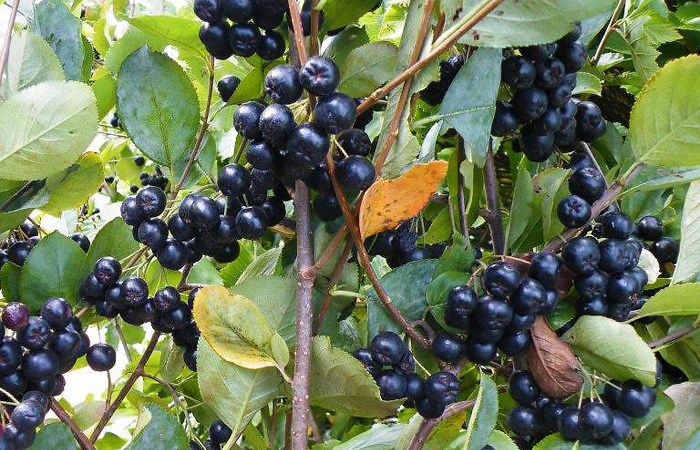Looking around at the snow now covering the ground it is hard to believe that it is still autumn. Nearly all the trees have dropped their leaves, except for a few long standing Willows and Birch.
One of the shrubs that was long standing this fall was the Viking Chokeberry. It was one of our last shrubs to drop its leaves and it continued putting on a show right until the end. The glossy green foliage begins turning rich red colour in mid-September. Let me tell you that the colour is the envy of Burning Bush and Amur Maples. I find the Chokeberry to be an excellent substitute for Burning bush. At 5′ tall and wide it is a good medium sized shrub, but the Chokeberry is more cold tolerant. Burning Bush will often too freeze and stress if they are planted in an area that is too exposed. While the Chokeberry is still considered a zone 3 plant it is still a good step ahead of the zone 4 Burning Bush. It is also a shade tolerant plant making it flexible about its location. Do keep in mind though that most fall colour shrubs will put on a better show in autumn if they are growing in sun.
Perhaps the best feature of the plant is actually the fruit. Edible berries produced in abundance. They are roughly the size of a Blueberry but taste similar to a Chokecherry with a rather stringent flavour. They are highly nutritious and are considered a “super fruit”.
The berries are easier to use for baking or preserves than Chokecherries because they have small seeds inside rather than a pit. I personally enjoyed eating them fresh off the bush this year. The fruit began to ripen in late August and I was surprised to see the fruit remaining good in the bush into early October!
The Chokeberry is also self-fertile so you only need one bush to produce fruit. If you have two different varieties their cross pollination my produce a heavier yield. It will still produce well, making it a good fruiting option for small yards or as an edible hedge.




